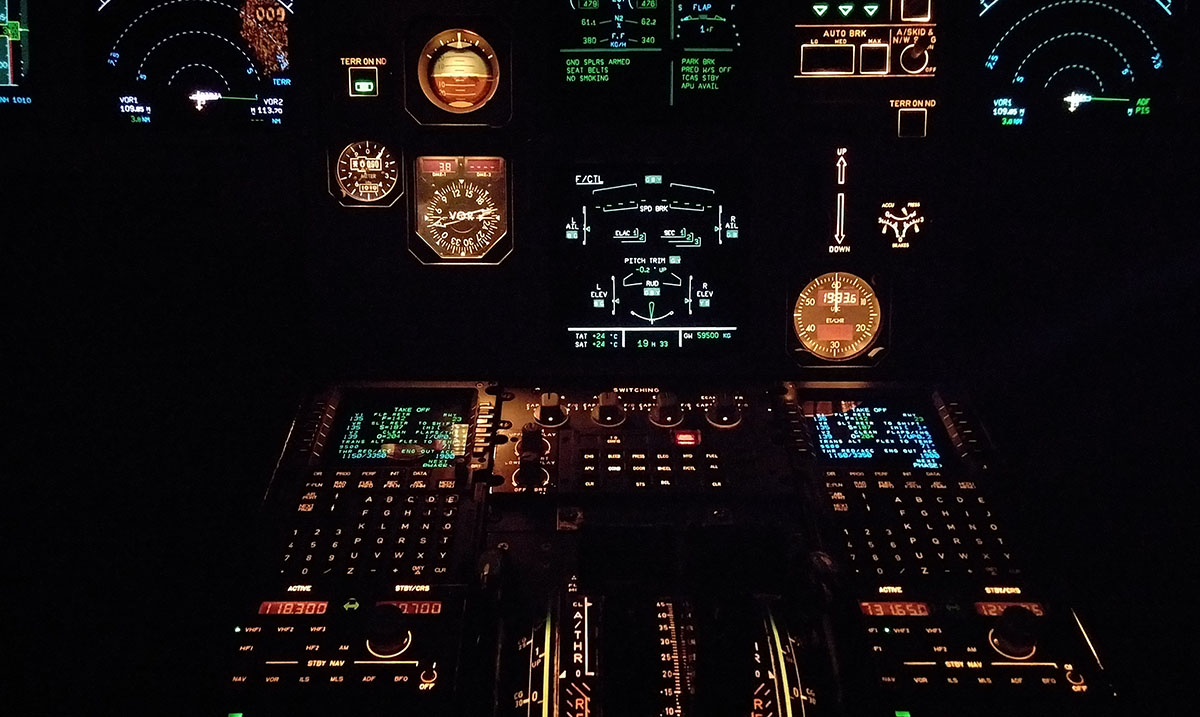We’ve already talked about the autopilot in another article or, more generally, about flight instruments, but today we’ll talk about something even more technical for real cockpit fans.
After all, we know that the #AvGeek column of our blog really gets our readers going and, so, we see it as our duty to satisfy your increasingly curious minds…
In order to understand the flight director, you need to remember the function of one essential tool: the artificial horizon. This is a gyroscopic instrument that gives pilots information on the aircraft’s attitude, i.e. its position in relation to the horizon and to the three longitudinal, transverse and vertical axes. The artificial horizon is a combination of two instruments: the attitude indicator and the turn and slip indicator.
The flight director is a horizontal and vertical display mode which is superimposed on the attitude indicator image in order to show the pilot in which direction and to what degree to move the controls to execute a manoeuvre.

Just like the floor in Ikea, the arrows of the flight director show the right ‘route’ to follow. Like in a video game, the pilot steers the aircraft so that the two lines on the display, one horizontal and the other vertical, match. The point where they cross is like a gunsight that the pilot always needs to get in the right place to ‘drive’ the aeroplane in the right direction.
Each airline has flight director systems which are designed ad hoc for its own aeroplanes.
Pilots have the option to choose whether to have the autopilot satisfy the flight director’s ‘requests’ or to manually pilot the aeroplane.
In other words, the flight director shows the pilot the same actions which the autopilot would operate if it was activated.
Is that all clear?
‘Five by five’ is the answer a pilot might give!




